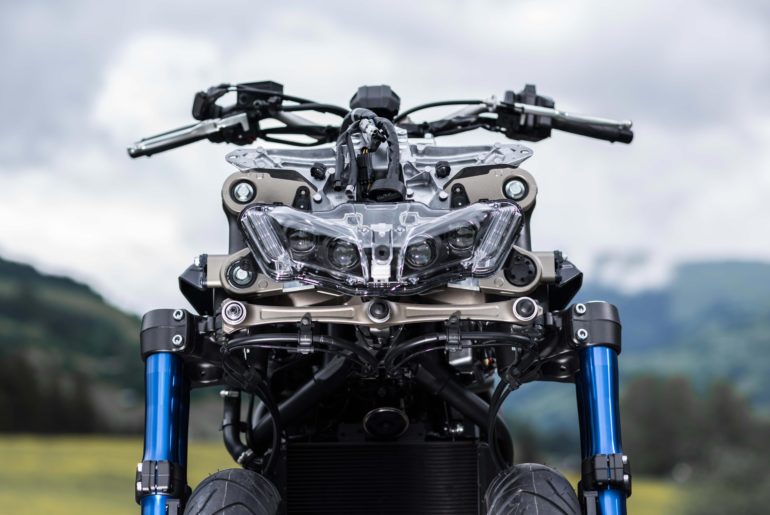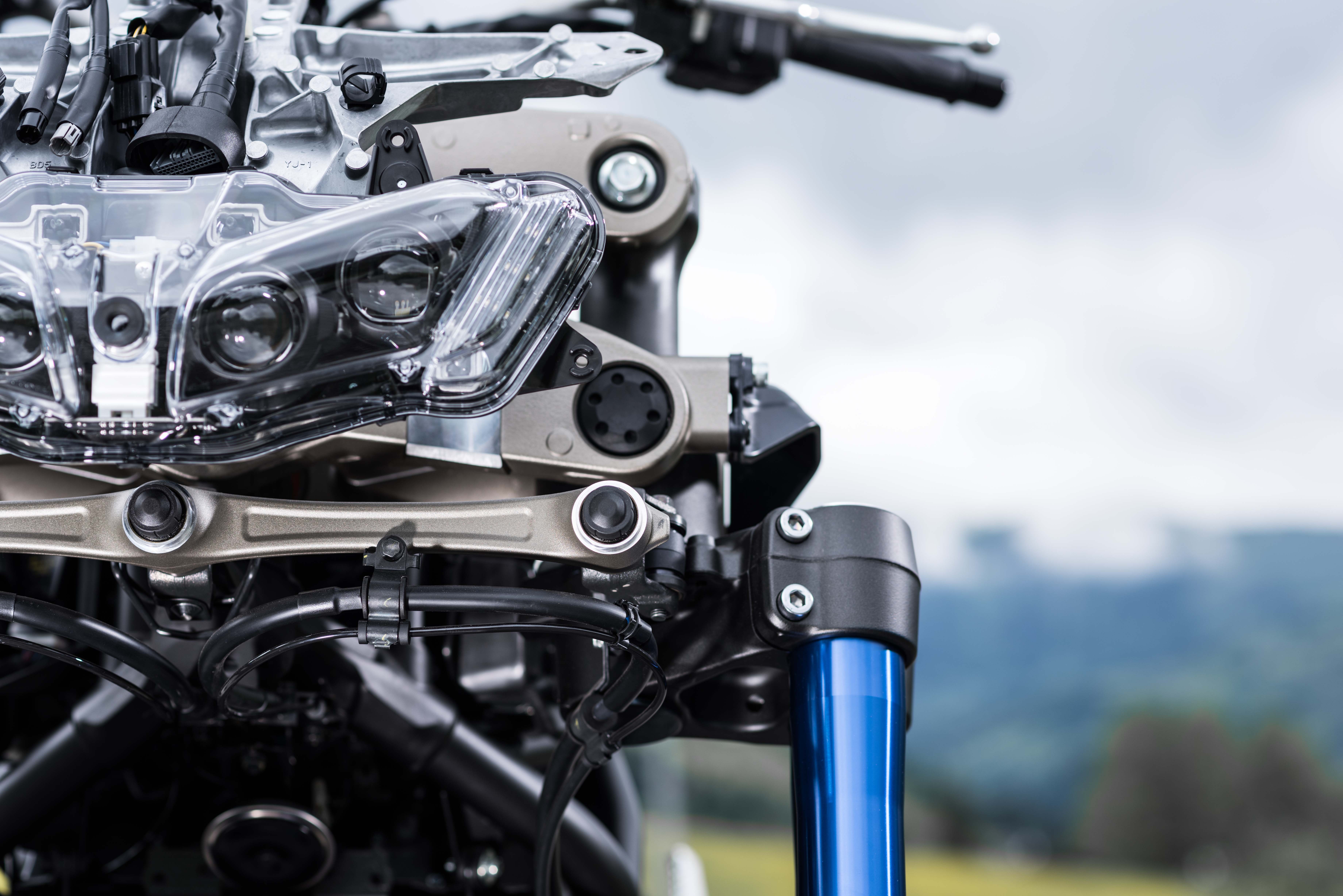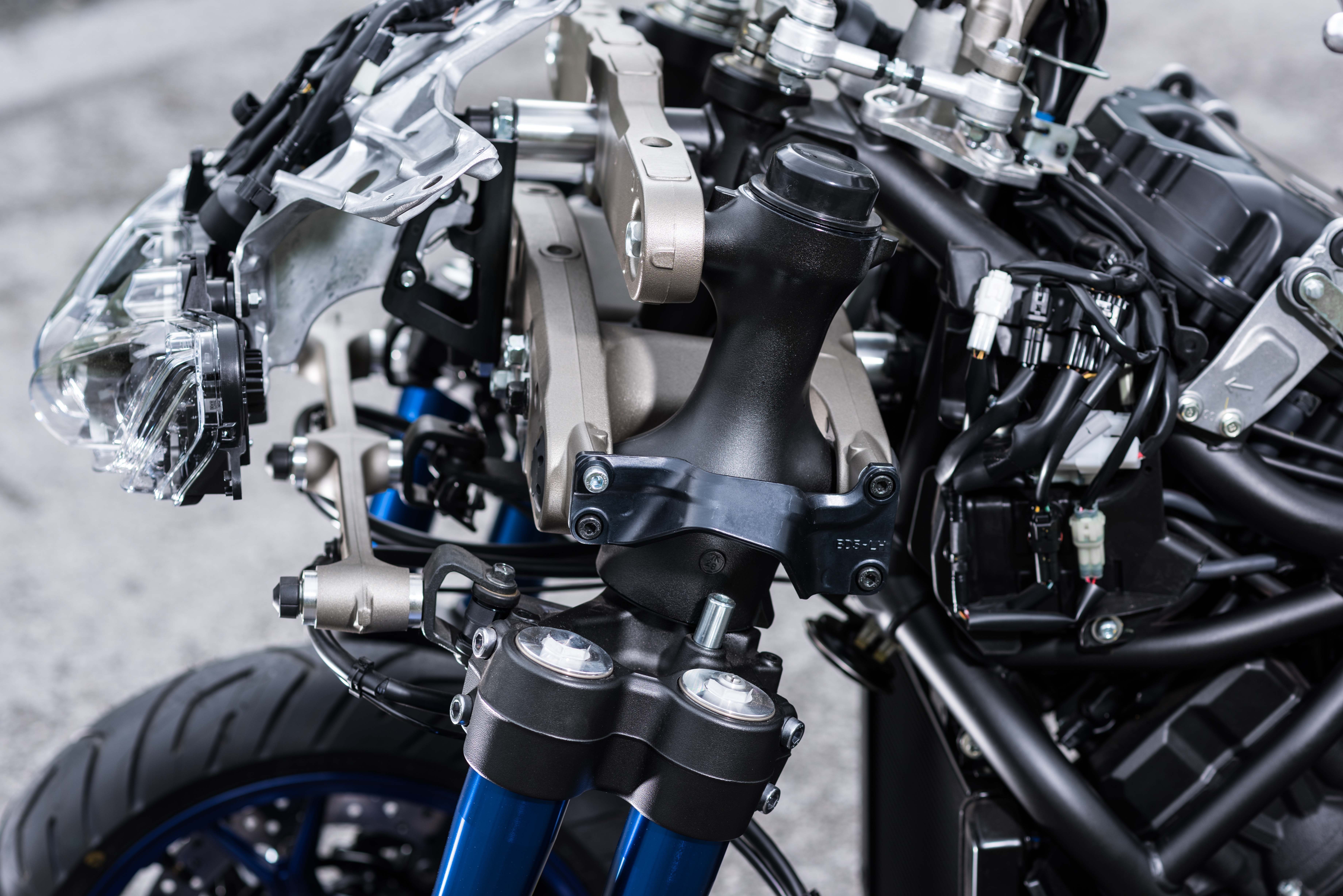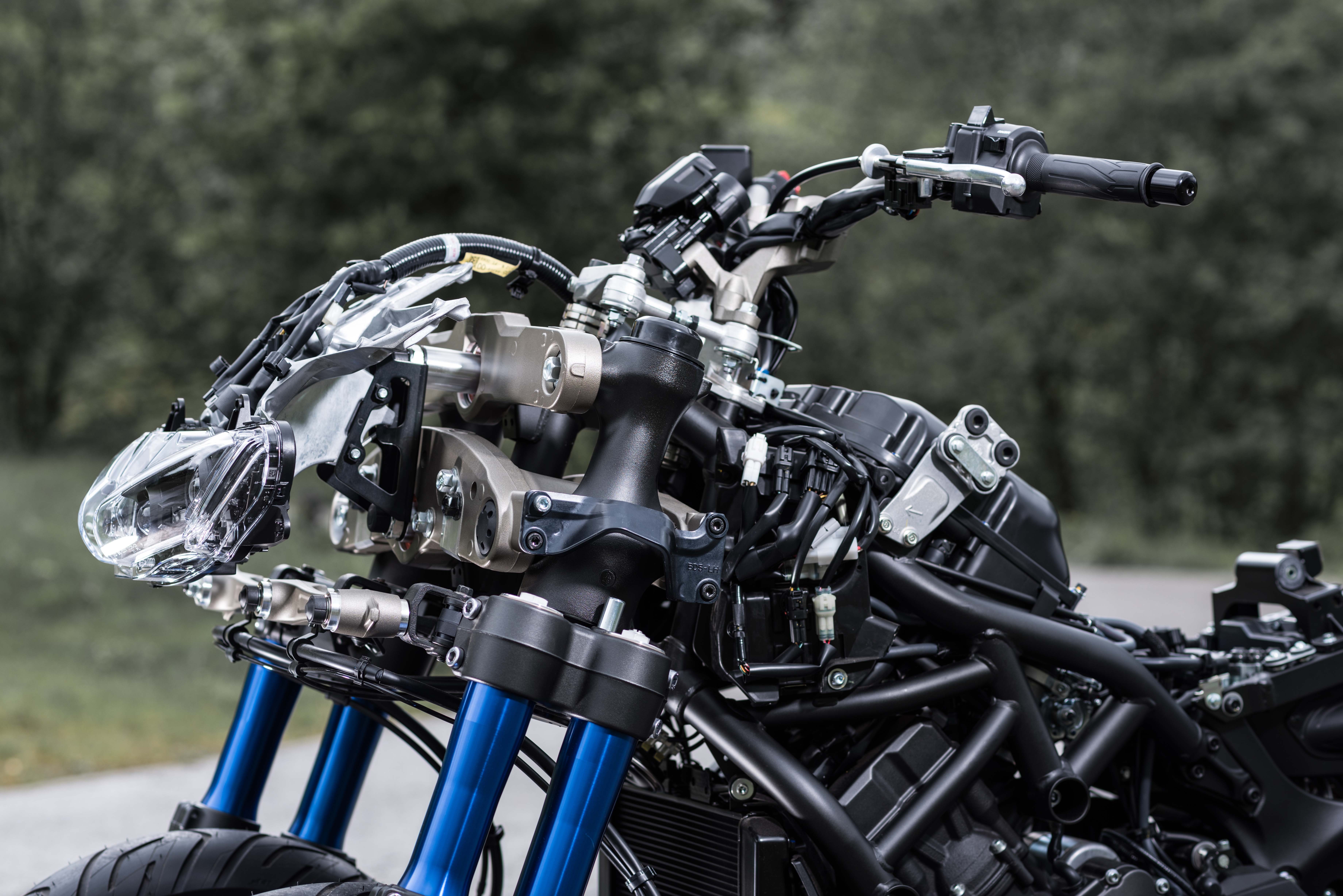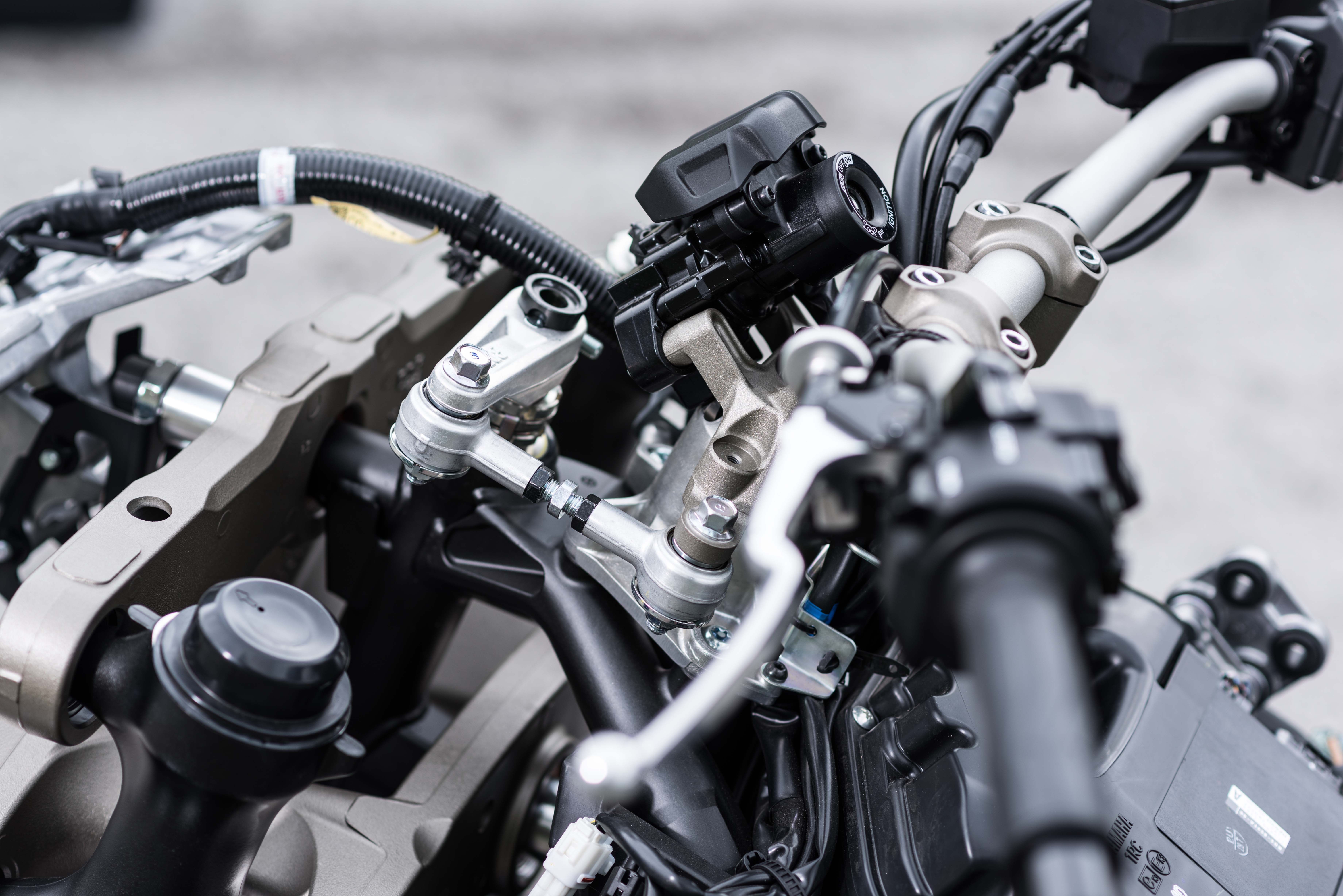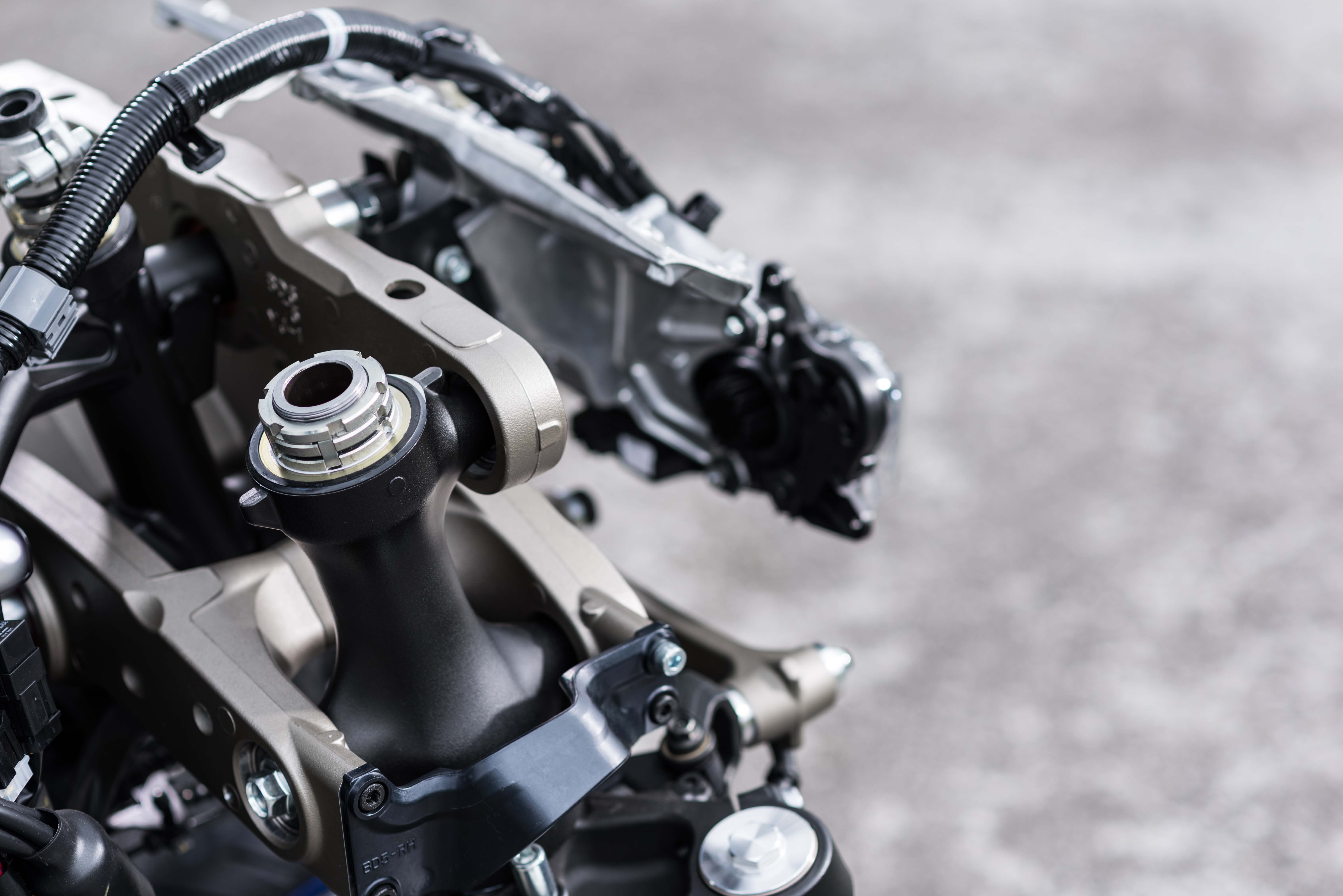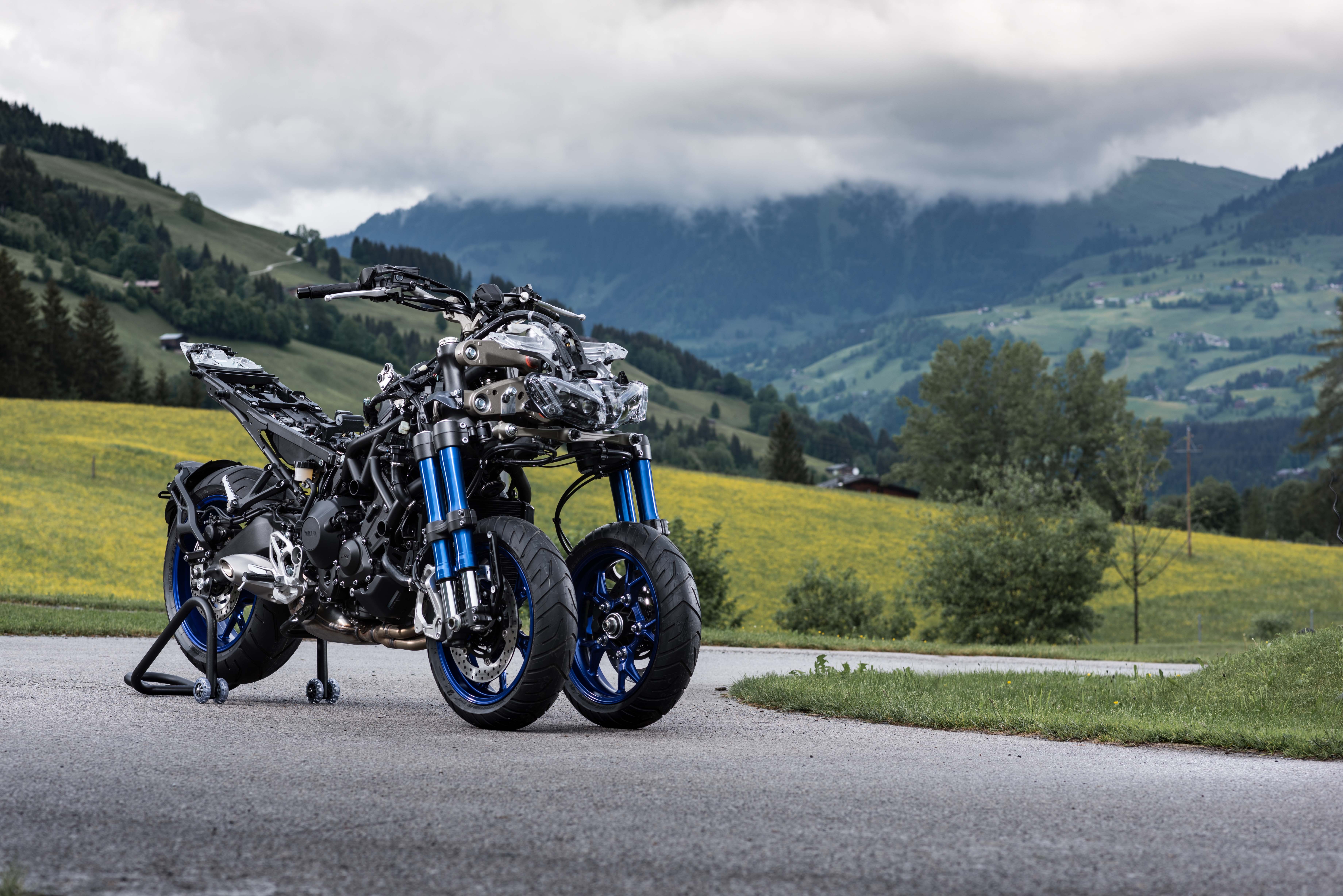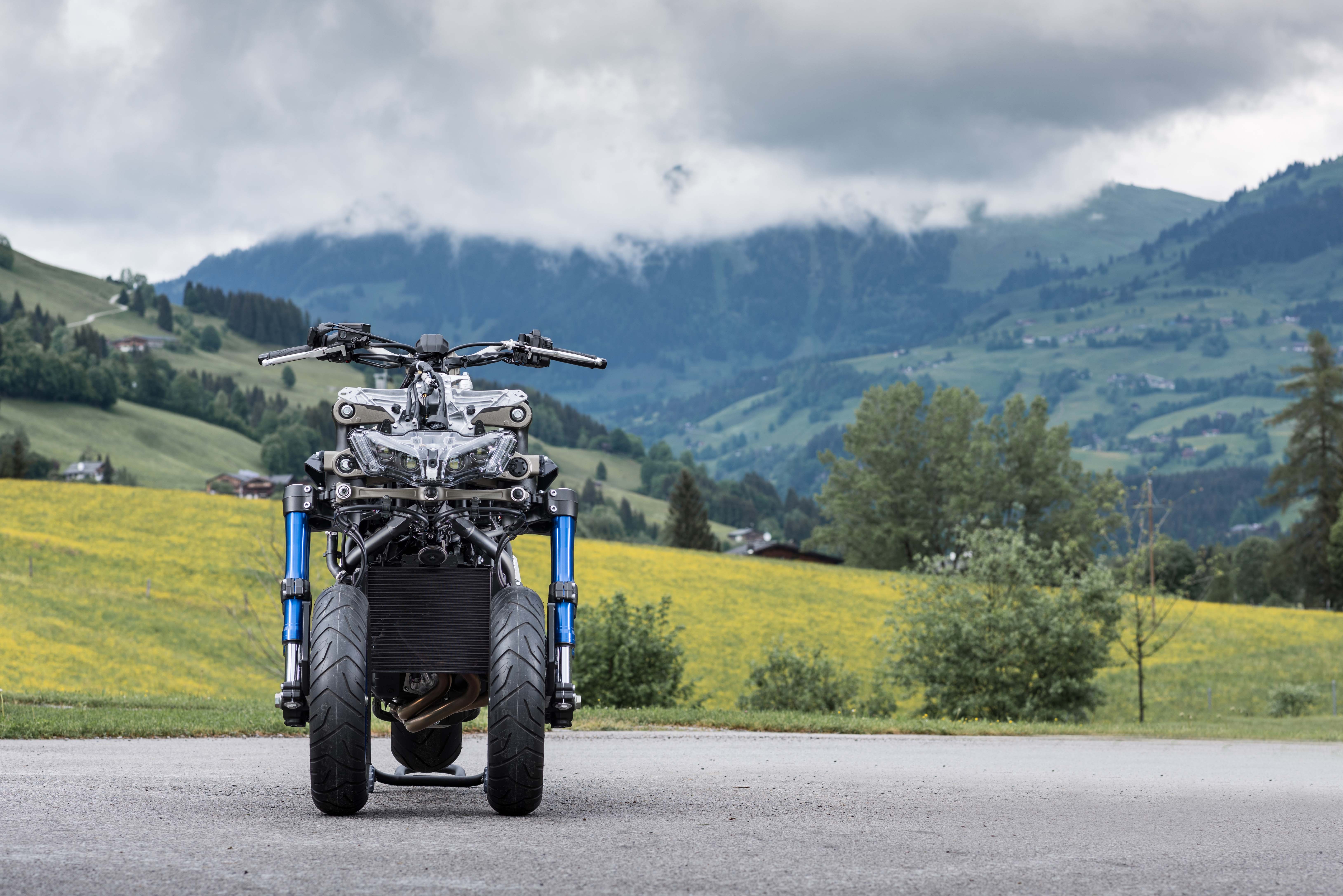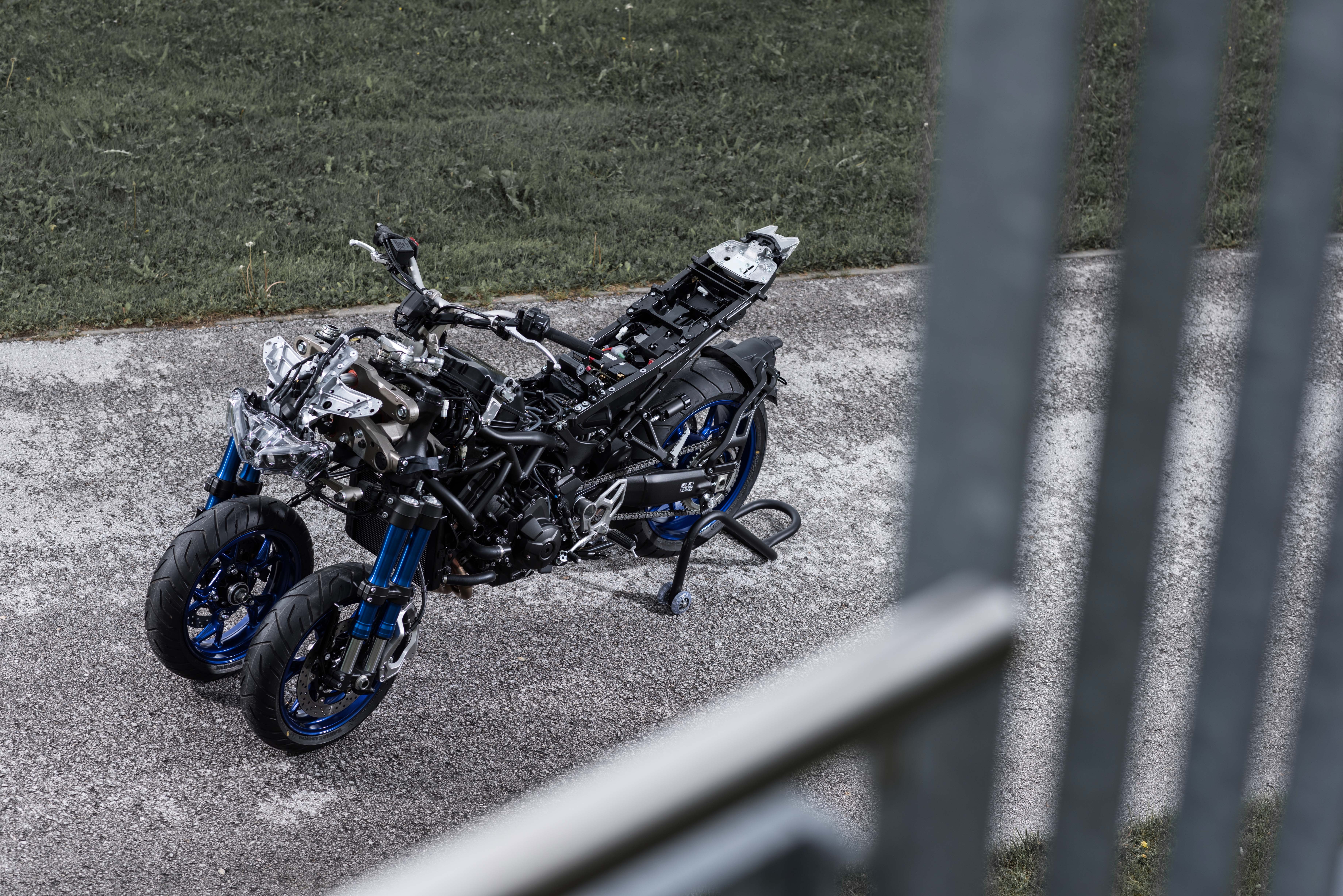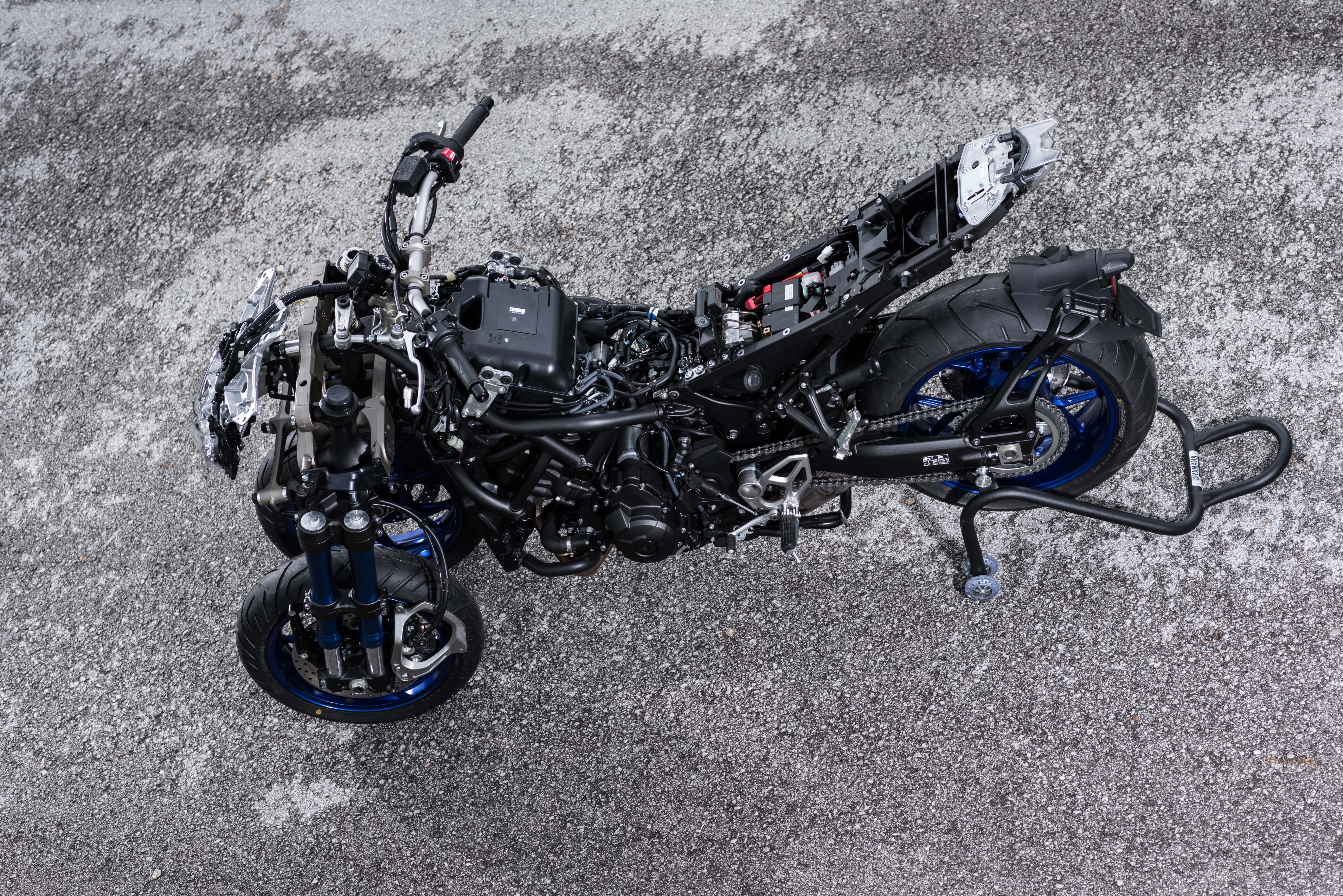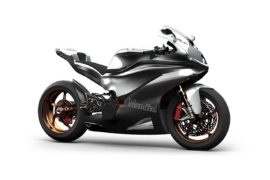It has to be the weirdest motorcycle yet, if you can even call it that (some don’t), but it is also luridly intriguing. we are of course talking about the Yamaha NIKEN (read the ride review here, by the way).
A mullet of machines, the NIKEN is business in the front, and party in the back, with its dual 15-inch front wheels mated to a grand total of four conventional fork tubes, via an elaborate parallelogram linkage, while the 17-inch rear wheel spins from a more conventional swingarm design.
This is because from behind the headstock, things get a bit more familiar, with a chassis that is built mostly from steel tube, and a swingarm that comes from cast aluminum. The motor is a revised version of the three-cylidner engine that is found in the Yamaha MT-09.
Available in any color you want, so long as it’s blue, Yamaha has wrapped up the NIKEN in some…interesting…fairing designs, but it is what is under the plastic that is the most intriguing.
Sans fairings, we can get a glimpse into the technical maze Yamaha had to walk through in order to bring the NIKEN into reality.
Starting with the wheels, the 15″ rims were picked for both vertical clearance (looking at the stack of linkages for the parallelogram front-end, it’s easy to see why vertical heigh is an issue) as well as rotational mass, which gets compound because of the dual-wheel setup.
This makes for some difficult tires choices, because of the lack of sporty rubber that comes in a 15-inch wheel format, hence we see the use of the versatile Bridgestone Battlax Adventure A41 tires.
The tires track on the inside of their dual forks, which helps keep the overall stance of the NIKEN more narrow, and help it resemble more of a motorcycle in stature.
Yamaha says this is so the NIKEN will fit the parameters of what defines a motorcycle (the total track is just over 16 inches), but it also helps keep the NIKEN nimble on its toes – a wider stance would be more difficult to turn and have a larger turning radius.
Following the fork legs upward, one notices that suspension duties are only performed by single fork – the rear fork – on each side’s pairing, with the other fork – the front fork – on each side simply tracking along for axle stability.
This helps keep the front suspension setup more simple, as well as more approachable for experienced motorcyclists. Rather than having to tune each of the four forks, riders are left with only two forks with settings to adjust.
With about 80% more front contact patch area than a traditional motorcycle, the front-end grip is substantially greater than a standard sport bike, even with the adventure-touring tires mounted.
This provides a confidence-inspiring attack on corners, all the way to the NIKEN’s maximum lean-angle of 45° – after that point, one starts lofting wheels off the ground (provided you are not impeded with other hard-part clearance issues).
Because of the different radii that each front wheel must take, it is the inside wheel that carves the turn, with the outside wheel “following” and providing extra stability.
It is a complex task (did you see the crazy linkages in the high-res shots below???), but judging from the first ride accounts, Yamaha has managed to keep the action familiar to seasoned motorcyclists.
It may not handle as sharply as the now antique “two-wheeled” motorcycles of yesteryear, but the trade-offs between handling and stability seem to balance out for Yamaha here, especially if you think of the NIKEN are more of a tourer than a sport bike.
Though to note, Yamaha itself doesn’t seem to know where the NIKEN falls in the sport vs. tourer continuum.
Will we see more leaning multi-wheelers from the Tuning Fork brand? Almost certainly. Will they be as big and burly as the NIKEN? Probably not. Expected to be around $16,000 MSRP by the time they hit US dealers, the Yamaha NIKEN is certainly more expensive than a traditional bike.
Looking at the parts layout, it is easy to understand part of the added cost, but we also suspect that Yamaha is taking advantage of the NIKEN’s unique offering – hoping to capitalize on the adventurous early adopters who are willing to try two in the front and one in the back.
Taking a look at the concepts that the Japanese brand has shown us already, we wouldn’t be surprised to see a leaning four-wheeler follow-up the NIKEN, with perhaps some smaller on-road and off-road models in the mix as well, perhaps in the 500cc / middleweight category.
Until then, we have left the photos below in super high-resolution format, so you can scrutinize every detail made by the engineers in Iwata — and to prove to the folks at Piaggio that Yamaha hasn’t run afoul of its own leaning three-wheeler patents.

